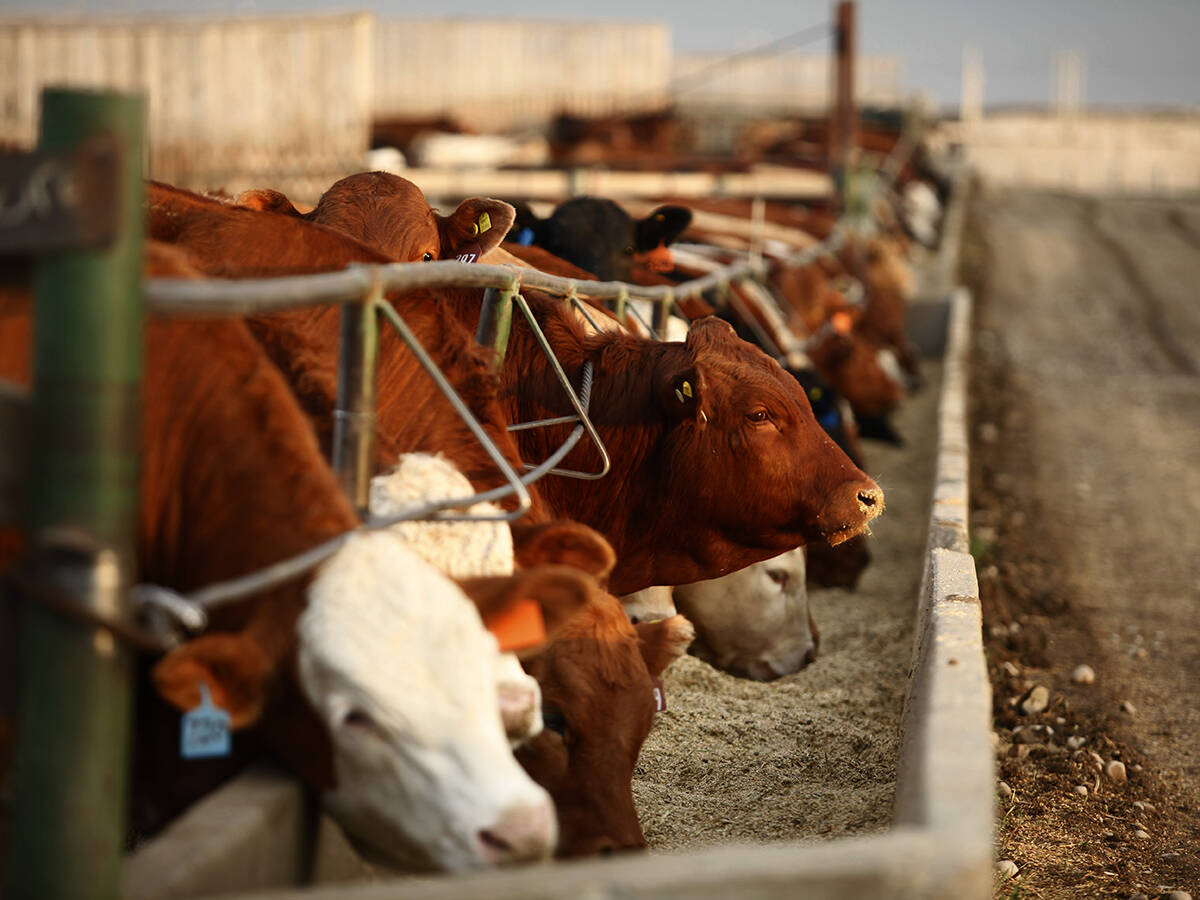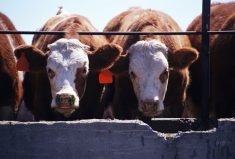Western Canadian feeder cattle traded at similar levels to seven days earlier on very light volumes and little buying interest. Most auction barns were closed and cattle buyers are on holidays, so drawing market information is like the young cowboy at the high school dance — his mind is anywhere but on the markets.
Limited packages of yearlings were available and prices remain very strong relative to the fed cattle market. Mixed steers averaging 850 lbs. were quoted in the range of $248 to $252 in central Alberta. Small groups of steers averaging 805 to 825 lbs. with very little flesh were quoted from $265 to $270 landed in a southern Alberta feedlot. There was a wide range of prices, depending on quality and region, which made the market hard to define.
Read Also

U.S. livestock: Cattle extend gains on improving cash prices, packer demand
Reuters — Chicago Mercantile Exchange live cattle futures set a three-week high and feeder cattle hit their highest level in…
Small volumes of fresh calves are coming on stream but these cattle drew little attention. A small string of mixed heifers averaging just under 750 lbs. sold for $245 in east-central Alberta; a handful of fresh 565-lb. Angus-based steers were quoted at $315 landed in southern Alberta.
Alberta packers were buying fed cattle at $183 this past week but they are only going to lift the cattle in the last half of August. Packers are saturated with cattle for nearby delivery in both the U.S and Canada. Break-even pen closeouts are in the range of $188-$191 so there is little incentive to buy feeders at the current price levels.
Feed barley continues to trade at $220 delivered in the Lethbridge area but cattle feeders are watching the U.S. Department of Agriculture report due out Wednesday, which will give us an idea of the upcoming corn harvest. Are we going to see larger supplies of corn and DDGS flow into southern Alberta? This is the main question influencing feed grain values, because barley stocks will remain relatively snug for the 2015-16 crop year.
The market environment for feeder cattle feels vulnerable moving into the fall period. U.S. wholesale boxed beef products finished the week with choice product at $234, down from $262 last year. Abundant supplies of competing meats are weighing on the beef complex heading into the seasonal slow period of beef consumption. Restaurant traffic tends to ease in September and weaker equity markets generally bring out negatively viewed economic data. Every market moves and then the media look to justify the move. The feeder market will be more exciting than political debates but for the time being, there is a calm before the storm.
— Jerry Klassen is manager of the Canadian office for Swiss-based grain trader GAP SA Grains and Produits. He is also president and founder of Resilient Capital, which specializes in proprietary commodity futures trading and commodity market analysis. Jerry owns farmland in Manitoba and Saskatchewan but grew up on a mixed farm/feedlot operation in southern Alberta, which keeps him close to the grassroots level of grain and cattle production. Jerry is a graduate of the University of Alberta. He can be reached at 204-504-8339.
















